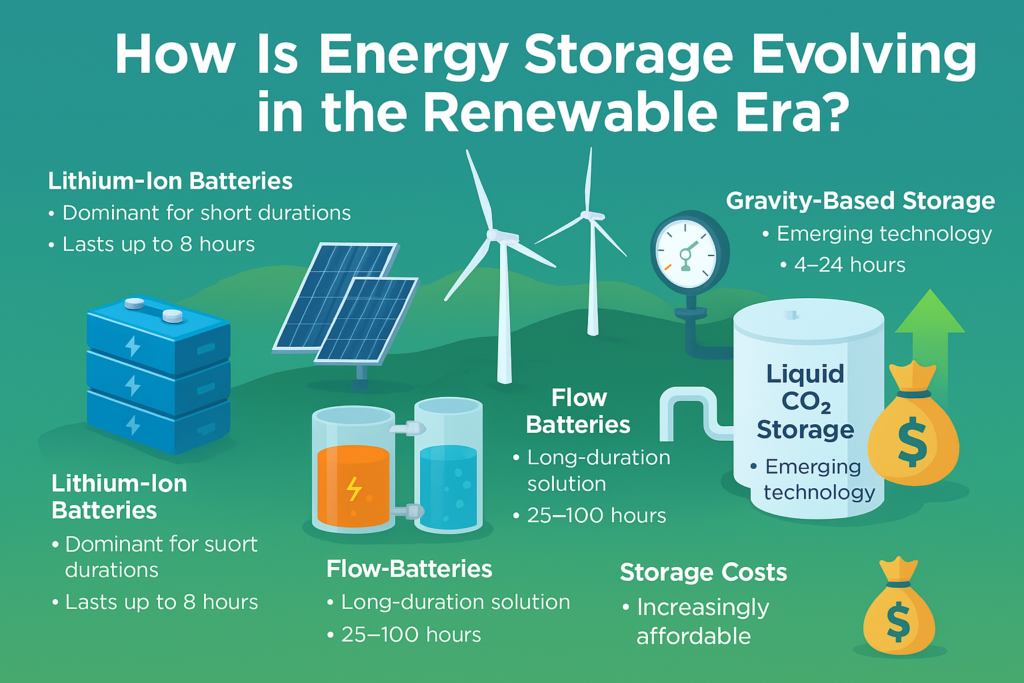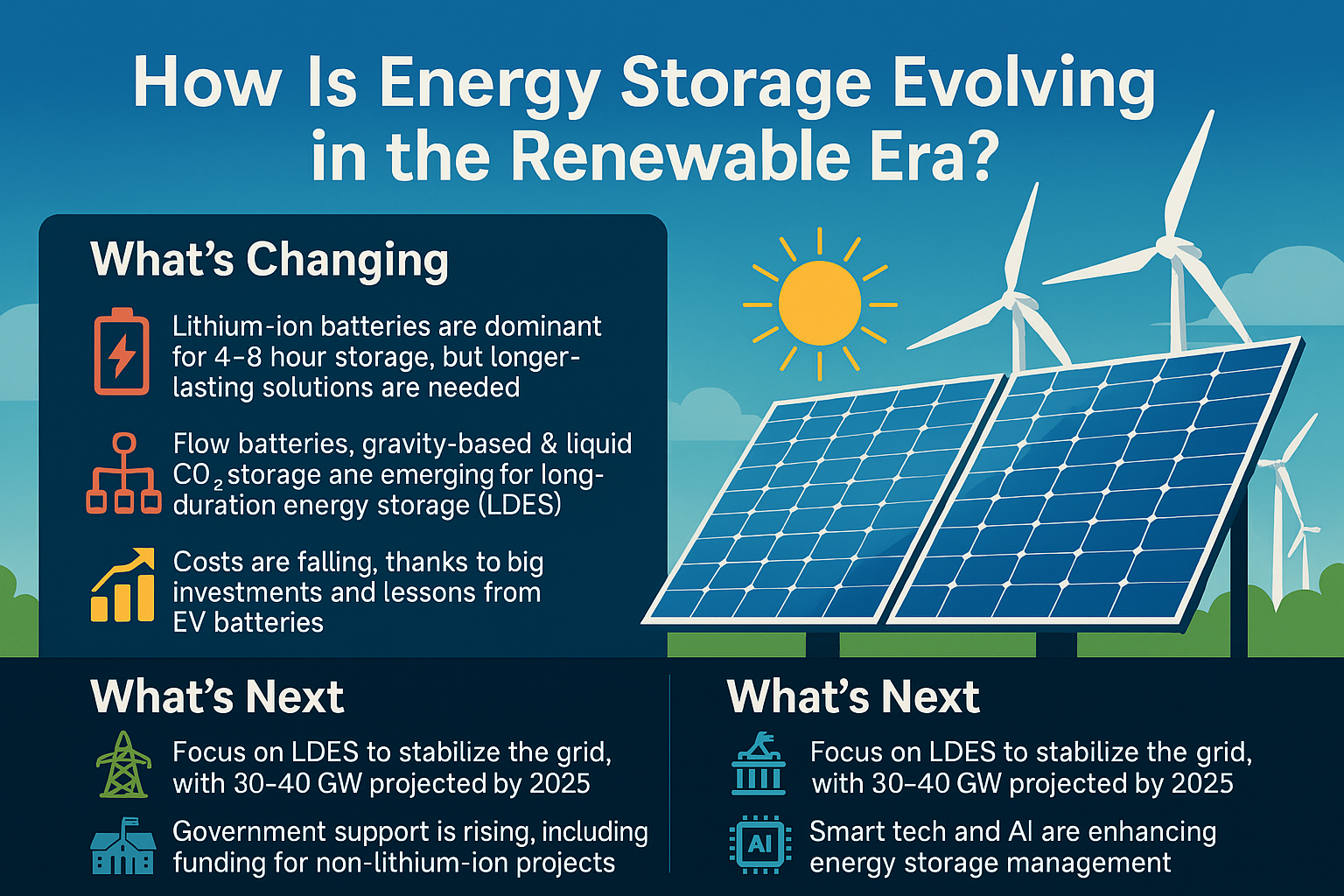🏆 ✅ Quick Highlights: Energy Storage Transformation at a Glance
- 📈 Energy storage is shifting from short-duration (4–8 hrs) lithium-ion systems to long-duration storage (LDES) solutions like flow batteries, gravity-based systems, and thermal storage.
- ⏳ By 2025, up to 30–40 GW of long-duration storage could be deployed globally to support grid reliability.
- 🎉 Liquid CO2 storage is emerging as a new player, offering 4–24 hours of duration and 70–80% efficiency using existing infrastructure.
- 📊 Declining costs and government support are accelerating the adoption of non-lithium storage tech.
- 🧠 AI and smart systems are improving storage efficiency and prediction capabilities.

Introduction
Energy storage is changing rapidly to address the variability of renewable energy sources like solar and wind. To ensure consistent power delivery, new technologies are emerging that go beyond traditional lithium-ion batteries.
Historical Context & Current State
Historically, energy storage relied on short-duration solutions, primarily lithium-ion batteries, which serve well for 4–8 hour use cases. These batteries benefited from EV production scale and cost drops. In 2025, energy storage markets reached 360 GWh globally, with major growth driven by renewable integration and industrial electricity demand.
In the U.S., 50 GW of solar capacity was added in 2024, with battery storage leading the way. Lithium-ion remains dominant for short-duration storage but falls short for multi-day reliability.
The Shift to Long-Duration Energy Storage (LDES)
LDES refers to systems that store and discharge electricity for 10+ hours. This is essential for bridging prolonged gaps in solar and wind production.
Key LDES Technologies:
| Storage Type | Tech Example | Duration (hrs) | Efficiency |
|---|---|---|---|
| Mechanical | Gravity-based, liquid CO2 | 4–24 | 70–90% |
| Electrochemical | Flow batteries, metal anode | 25–100 | 50–80% |
| Thermal | Sensible heat, molten salt | 200 | 55–90% |
| Chemical | Power-to-gas (hydrogen) | 500–1000 | 40–70% |
Pumped hydro remains the most widespread globally, while new entrants like Energy Vault are pioneering flexible gravity storage.
Innovations Driving the Future
- Liquid CO2 Storage: Converts CO2 to liquid using excess electricity and reverts it to generate power. Utilizes existing oil/gas infrastructure.
- Solid-State & Sodium-Ion Batteries: Offer safety, scalability, and resource security over lithium-ion.
- Thermal Energy Storage (TES): Uses phase change materials for efficient long-duration storage.
- AI Integration: Forecasts demand/supply, improves load balancing, and manages distributed storage networks.
Policy & Market Growth
Governments are fueling growth:
- U.S. DOE’s LDES Program funds non-lithium storage innovations.
- California’s LDES initiative allocates $270M+ to diverse tech portfolios.
- Since 2019, global investments in LDES exceeded $58B.
Challenges and Opportunities
Challenges:
- High upfront cost for LDES technologies
- Site-specific constraints for pumped hydro
- Material dependencies for flow batteries (e.g., vanadium)
Opportunities:
- Falling costs from scale and innovation
- Repurposing oil & gas infrastructure
- AI-managed flexible storage ecosystems
Conclusion
The evolution of energy storage is central to building a reliable, renewable-powered grid. Long-duration technologies like flow batteries, gravity storage, and thermal systems are now rising to meet the challenge. Backed by policy, smart systems, and falling costs, the future of energy storage is smarter, cleaner, and more resilient than ever before.
